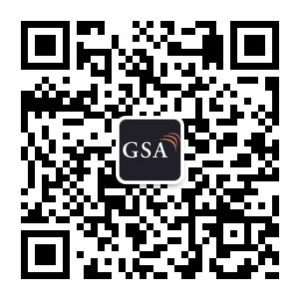May 2022 National Spectrum Positions
A snapshot from GSA’s GAMBoD database of national spectrum positions around the world. This report covers 600 MHz, 700 MHz, 1400-1500 MHz, 2.1 GHz, 2300-2400 MHz, 2496-2690 MHz, C-Band, 4400-5000 MHz and 26-28 GHz in each country. Charts are grouped in ITU regions and show over a dozen stages of assignment for spectrum ranges.
600MHz May 2022 National Spectrum Positions
Spectrum in the 600 MHz range (617-652/663-698 MHz, including bands 71 and n71) is of interest for mobile services, and although the market is at an early stage, an increasing number of countries are considering this spectrum for IMT. This document shows GSA’s current understanding of the state of mobile operator licensing around the world at 600 MHz.
700MHz May 2022 National Spectrum Positions
Spectrum in the 700 MHz range is widely used for mobile services, and during 2022 more countries are considering or planning to assign spectrum in this range for use in LTE and 5G networks. The charts in this document show GSA’s current understanding of the state of mobile operator licensing around the world at 700 MHz.
1400MHz May 2022 National Spectrum Positions
Spectrum in the 1400-1500 MHz range (1427-1518 MHz, including bands 11, 21, 32, 45, 50, 51, 74, 75, 76 and n50, 51, n74, n75, n76, n91, n92, n93 and n94) is of interest for mobile services, and although the market is at an early stage, an increasing number of countries are considering this spectrum for IMT. This document shows GSA’s current understanding of the state of mobile operator licensing around the world at 1400-1500 MHz.
2.1GHz May 2022 National Spectrum Positions
Spectrum at 2.1 GHz, comprising bands 1, 34, 65, n1, n34 and n65, is widely used for mobile services, and more countries are considering or planning to assign spectrum in this range for use in LTE and 5G networks. The charts in this document show GSA’s current understanding of the state of mobile operator licensing around the world in these bands.
2300MHz May 2022 National Spectrum Positions
Spectrum in the 2300-2400 MHz range is widely used for mobile services, and during 2022 more countries are considering or planning to assign spectrum in this range for use in LTE and 5G networks. The charts in this document show GSA’s current understanding of the state of mobile operator licensing around the world at 2300-2400 MHz.
2496MHz May 2022 National Spectrum Positions
Spectrum in the 2496-2690 MHz range (including bands 7, 38, 41 53, 69 and n7, n38, n41, n53 and n90) is widely used for mobile services, and more countries are considering or planning to assign spectrum in this range for use in LTE and 5G networks. The charts in this document show GSA’s current understanding of the state of mobile operator licensing around the world at 2496-2690 MHz.
4400MHz May 2022 National Spectrum Positions
These charts show GSA’s current understanding of the state of 5G and 5G-relevant (that is, technology-neutral) licensing around the world in the C-band. They do not provide data about other allocations of the spectrum in these ranges, for example, for fixed wireless access services, point-to-point links, or for satellite or governmental use.
C-Band May 2022 National Spectrum Positions
Spectrum in the 4400-5000 MHz range is of interest for mobile services, and although the market is at an early stage, an increasing number of countries are considering this spectrum for IMT. Sub-bands in the 4400-5000 MHz range have coprimary mobile allocation. At WRC-19 over 40 countries identified some or all of the spectrum in this range for IMT. A few countries have assigned spectrum in this range already. The charts in this document show GSA’s current understanding of the state of mobile operator licensing around the world at 4400-5000 MHz.
26GHz May 2022 National Spectrum Positions
These charts show GSA’s current understanding of the state of 5G and 5G-relevant (that is, technology-neutral) licensing around the world in 26-28 GHz bands. They do not provide data about other allocations of the spectrum in these ranges – for example, for fixed wireless access services, point-to-point links, or for satellite or governmental use.
May 2022 National Spectrum Positions
WeChat: GSA Express


© GSA 2022
GSA Research
Mobile industry research is the backbone of GSA activity and covers topics from devices, chipsets and technology, to networks, features and spectrum.
The GSA research team is constantly following market dynamics and activity to ensure the latest data is available to GSA users via the GSA website.
Data is updated monthly and quarterly and can be referenced by users who register for free on the GSA website.
GSA GAMBoD Database
GSA reports are based on extensive data contained in the GSA GAMBoD databases, which is a resource available to GSA members and associates. Companies and policy makers can subscribe, as a GSA associate, to gain access to GSA databases and member reports for additional insights into the source data behind reports, which can be used for their own research purposes.
Discounted annual subscription are available to regulators, government agencies and licensed mobile operators.
Please email info@gsacom.com for more information.
